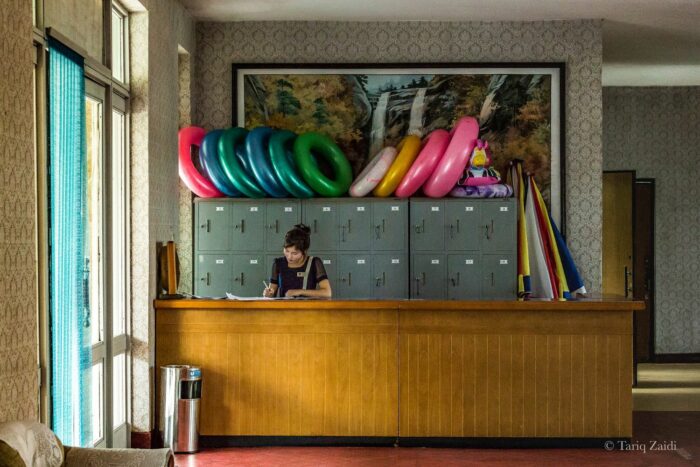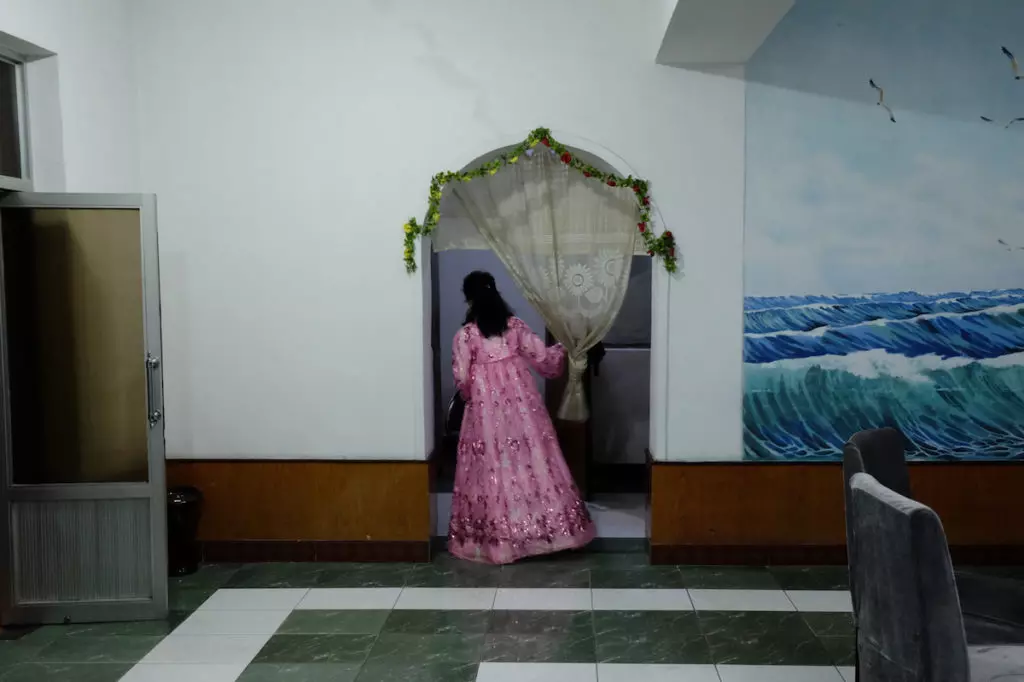Metro stations that double as bomb shelters. Mass synchronized swimming displays. Pastel-colored buildings resembling a “socialist fairyland.” And ordinary life and day-to-day moments, existing in the background and defying snap judgments and assumptions. Six photographers take us behind the scenes in the DPRK, where both access and photography are restricted and controlled, to reveal a complicated picture.


“Prior to his first visit to North Korea back in 2014, Fabian Muir’s preconceptions were much the same as everybody else’s; it’s difficult to disassociate the country from its leaders, missile tests, prisons, military parades, the famine of the 1990s or “notions of robotic factory workers who never smile”, emphasizes Fabian. ‘The real story is much more layered,’ the photographer asserts.
‘I realised that there seemed to be relatively little material providing more intimate insights into ordinary life, with the majority of photo essays on North Korea looking very similar to one another and focusing on already familiar — and photographically irresistible — motifs, such as imposing architecture, Leader statues or parades. All of that is unquestionably part of North Korea’s fabric, but there are other, more basic sides that have been largely ignored, be it North Koreans hanging out at the beach, having a beer, or sitting through a power failure. I feel these sides are also relevant.’”

“Carl De Keyzer, a photographer based in Belgium, offers a glimpse of the process of indoctrination within North Korea. From their first day in kindergarten, children are spoon-fed propaganda—from lectures about the legendary feats of Kim Il Sung to field trips to a museum that depicts, in gruesome detail, Americans massacring Koreans. What makes the images all the more remarkable is that De Keyzer was subject to the same restrictions imposed on foreign tourists who visit North Korea. During his four trips to the country over the past two years, he was attended at all times by official minders, and had to submit his photos for state approval.”
“Yet through his keen eye and careful framing, De Keyzer helps us see beyond the official picture. The images do not show us what is kept out of the frame. But within their narrow confines, they reveal much of what is meant to remain unseen.”- Jean H. Lee for The New Republic

Touring the interiors of Pyongyang, North Korea, says The Guardian’s Oliver Wainwright, is not at all dissimilar to “walking into a life-size Polly Pocket toy.” Although his views of the emerging metropolis were strictly monitored— all prohibited areas were described as “closed for renovation”—he couldn’t help but feel bewitched by the twee layouts of the buildings he visited. It’s a style he calls “kindergarten kitsch.”
Supreme leader Kim Jong-un is the driving force behind the new architectural initiatives. His goal, explains Wainwright, is to turn the capital into a tourist mecca, or in the words of the official state slogan, to “turn the whole country into a socialist fairyland!”


“Until recently, photographic views of North Korea were as controlled as the region itself. With Korea—Korea (Gestalten), the German photographer Dieter Leistner, who obtained special permission to photograph in Pyongyang outside of the normal, highly supervised structure, has made a fascinating comparative study of the capital cities of North and South Korea.
“Leistner applied his particular vision as an architectural photographer to Pyongyang, North Korea, and Seoul, South Korea, in 2006, and 2012 respectively, to capture the apparent dichotomy between the two places. Although not all pairs are exact comparisons, they have much to communicate with their interaction, and it is immediately apparent which is north and which is south with most pairs.”



Leave a Reply